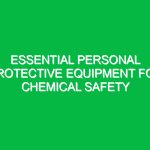Introduction
Hello Team,
Today, we’re gathering for a toolbox talk focused on a critical issue in our industry—Struck-by Incidents (Construction). These incidents are among the leading causes of injuries and fatalities on construction sites. Our aim today is to understand what these incidents are, how they occur, and most importantly, how we can prevent them. Safety is a shared responsibility, and your awareness and actions play a crucial role in maintaining a safe work Environment.
Understanding Struck-by Incidents
Let’s start by defining what we mean by Struck-by Incidents (Construction). These incidents occur when a worker is hit by a moving object, which can include tools, equipment, or materials. According to Safety data, struck-by incidents account for a significant percentage of construction-related injuries, which can lead to severe injuries or even fatalities.
Types of Struck-by Incidents
There are several types of struck-by incidents you should be aware of:
- Struck-by Falling Objects: This includes tools or materials that fall from heights.
- Struck-by Moving Vehicles: Workers can be hit by construction vehicles like forklifts, trucks, or loaders.
- Struck-by Swinging Objects: This can occur when equipment like cranes or hoists move materials around.
- Struck-by Flying Objects: Objects that are propelled through the air, such as debris or tools that are dropped.
The Importance of Preventing Struck-by Incidents
Understanding the significance of preventing Struck-by Incidents (Construction) goes beyond the statistics. Each incident has a profound impact not only on the individual affected but also on their families and coworkers. By ensuring that we all understand the risks and take proactive steps, we can foster a culture of Safety on our sites.
Real-Life Examples
Let’s consider a real-life scenario. Imagine a construction site where a worker is standing below a scaffold while another worker is unloading materials from above. If proper Precautions aren’t taken, the worker below could be struck by falling objects, leading to serious injury. This incident could have been avoided with proper communication, the use of protective gear, and adherence to safety protocols.
Key Hazards and Risks
Now that we understand what Struck-by Incidents (Construction) are, let’s discuss some common Hazards and risks associated with them:
- Improper Use of Tools: Tools that are not secured can fall and strike a worker.
- Inadequate Communication: Lack of communication can lead to misunderstandings about where workers are located and what tasks are being performed.
- Neglecting Personal Protective Equipment (PPE): Without proper PPE, the risk of injury increases significantly.
- Inadequate Training: Workers who are not trained properly may not recognize hazards or know how to mitigate risks.
Best Practices for Prevention
To prevent Struck-by Incidents (Construction), it is essential to follow specific Best Practices:
1. Use of Personal Protective Equipment (PPE)
Always wear appropriate PPE, such as hard hats, safety glasses, and steel-toed boots. PPE acts as your last line of defense against injuries.
2. Secure Tools and Materials
Ensure that all tools and materials are secured when not in use. This includes using tool lanyards and securing loads on scaffolds and lifts.
3. Maintain Clear Communication
Use clear signals and verbal communication when working in areas where others are present. Make sure everyone is aware of their surroundings and the tasks being performed.
4. Conduct Regular Safety Meetings
Hold regular meetings to discuss safety protocols and review any near-miss incidents. This helps everyone stay informed about potential hazards.
5. Implement a Safety Plan
Every job site should have a safety plan in place that outlines Procedures for preventing struck-by incidents. This plan should be regularly reviewed and updated.
Regulations and Standards
Compliance with safety Regulations is non-negotiable. The Occupational Safety and Health Administration (OSHA) has established regulations regarding struck-by hazards. Familiarize yourself with these regulations, as they are essential for ensuring safety on the job site:
- osha Standard 1926.501 – Fall Protection
- OSHA Standard 1926.602 – Material Handling Equipment
- OSHA Standard 1926.601 – Motor Vehicles
Understanding and complying with these regulations not only keeps you safe but also protects our company from potential legal issues and fines.
Engaging in a Safety Culture
Creating a safety culture requires the active participation of all team members. Here are some ways you can engage:
- Speak Up: If you see a potential hazard, don’t hesitate to report it. Your input is invaluable.
- Participate in Training: Take advantage of training opportunities to learn more about safety practices and protocols.
- Mentor Others: Share your knowledge and experiences with newer workers. Help them understand the importance of safety.
Open Discussion
Now, I’d like to open the floor for discussion. What are some concerns you have regarding Struck-by Incidents (Construction)? Have you ever encountered a situation that could have led to such an incident? Sharing experiences can help us all learn and reinforce safety practices.
Conclusion
In conclusion, the prevention of Struck-by Incidents (Construction) is a critical aspect of our work. By understanding the risks, adhering to safety protocols, and engaging actively in our safety culture, we can significantly reduce the likelihood of these incidents occurring.
Thank you all for your attention and commitment to maintaining a safe working environment. Remember, safety is not just a priority—it’s a value that we uphold every day. Let’s make sure we look out for one another and keep our worksite safe.


